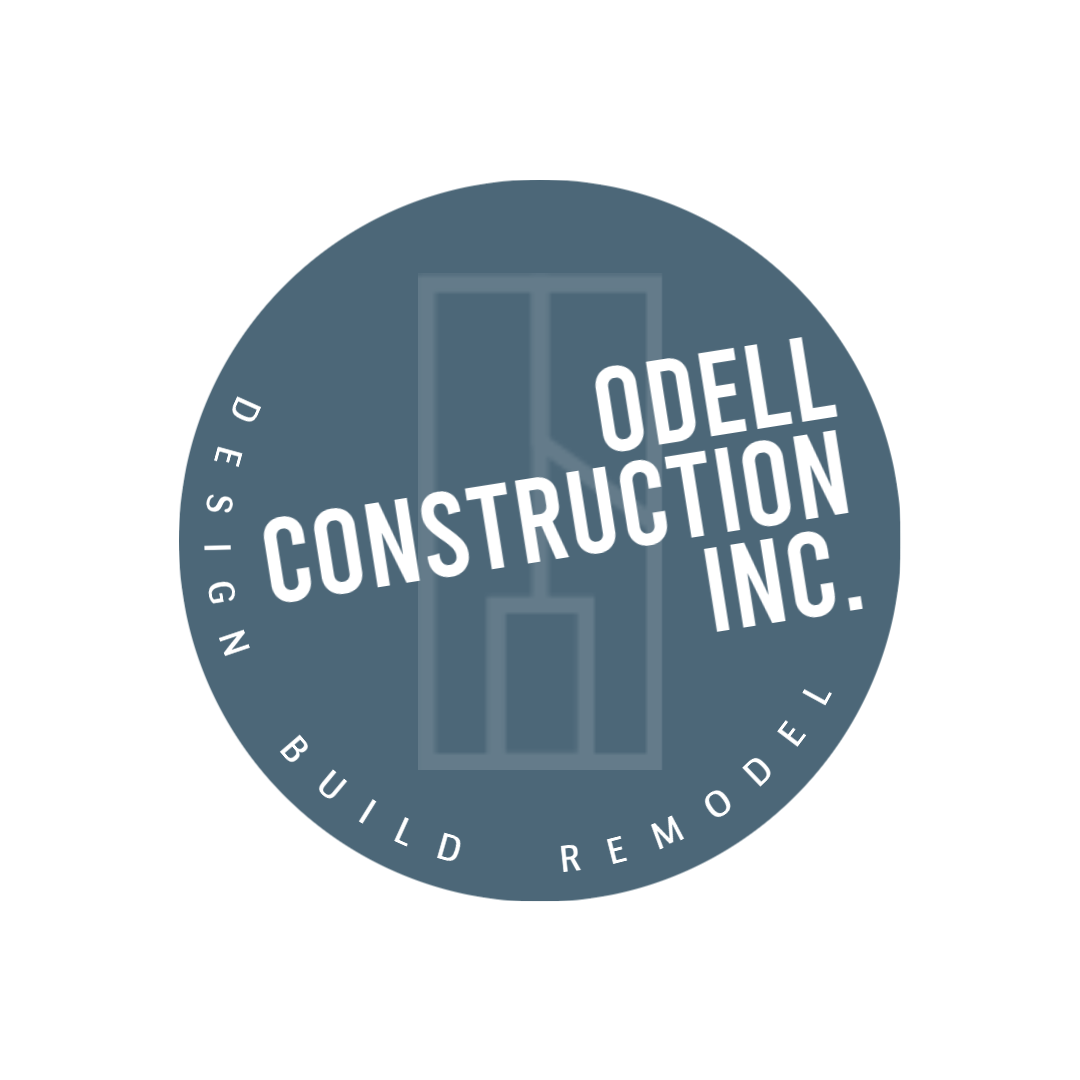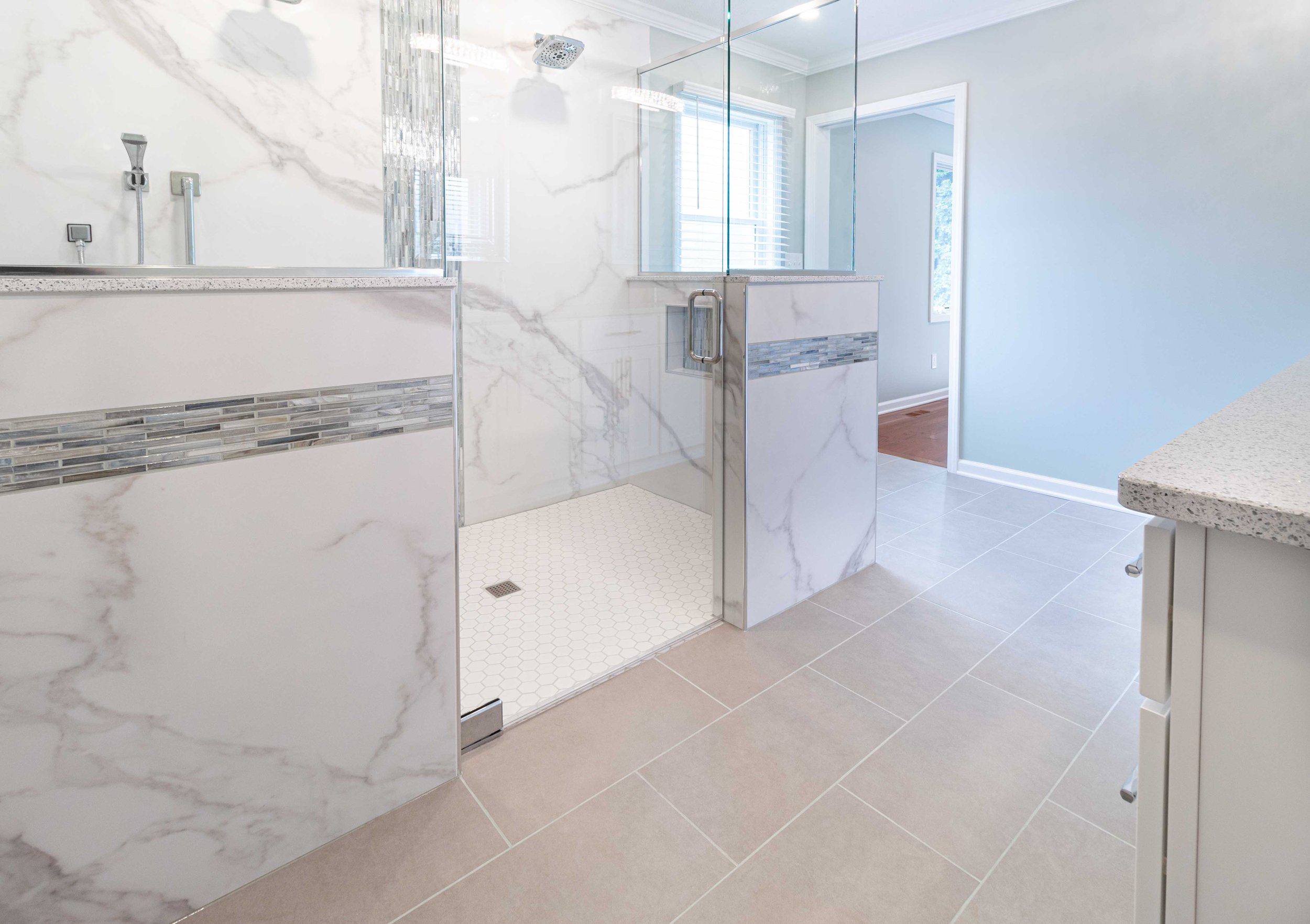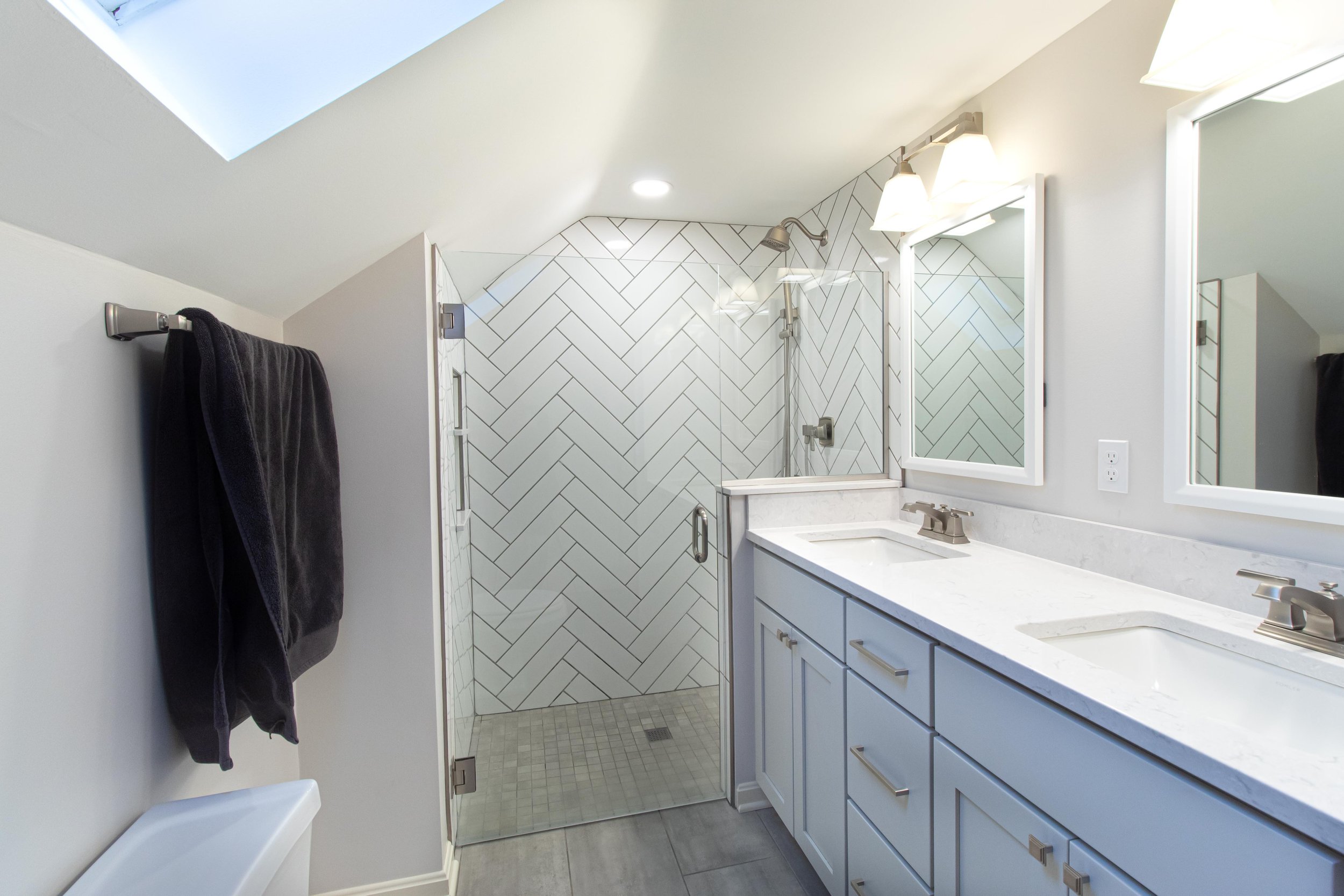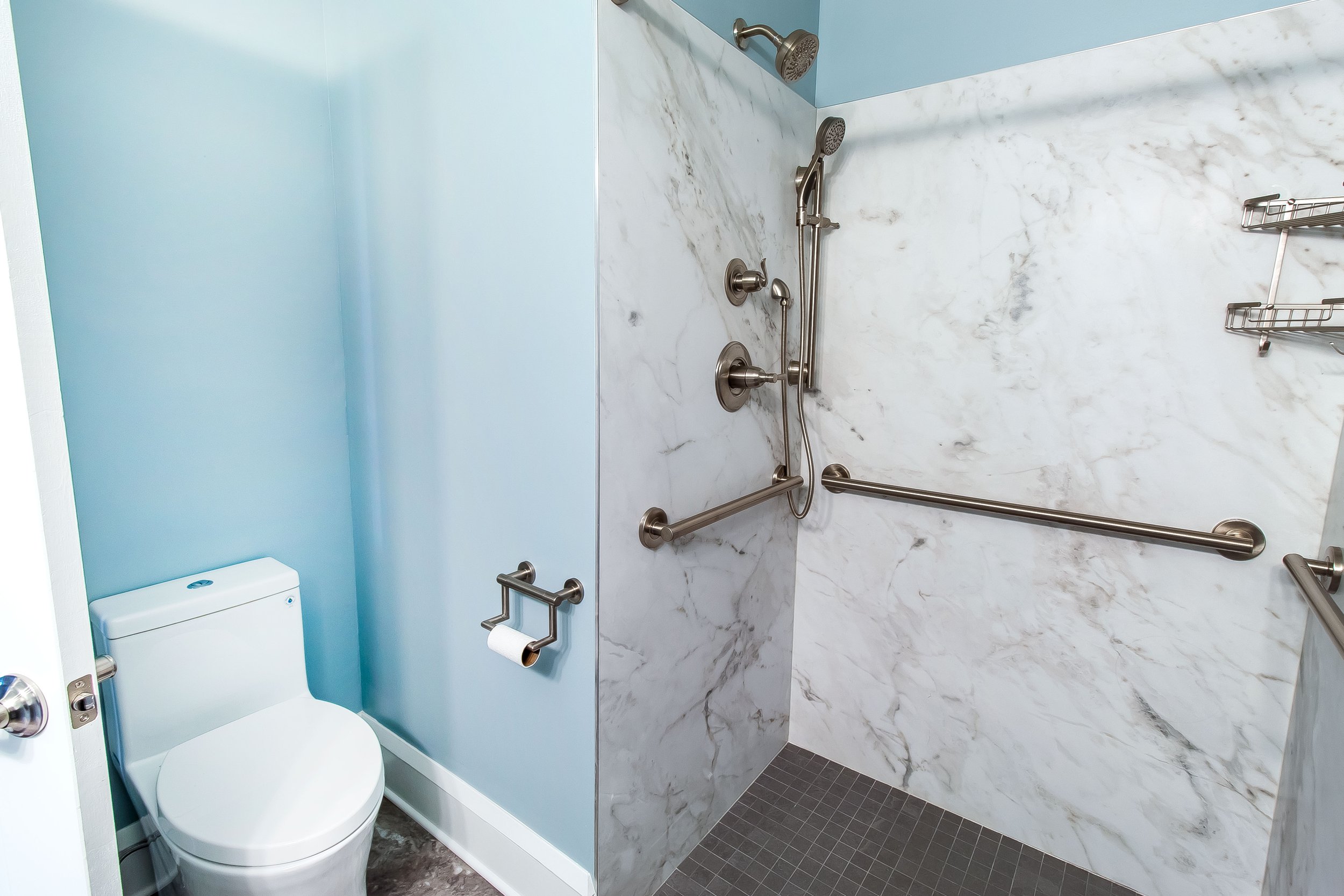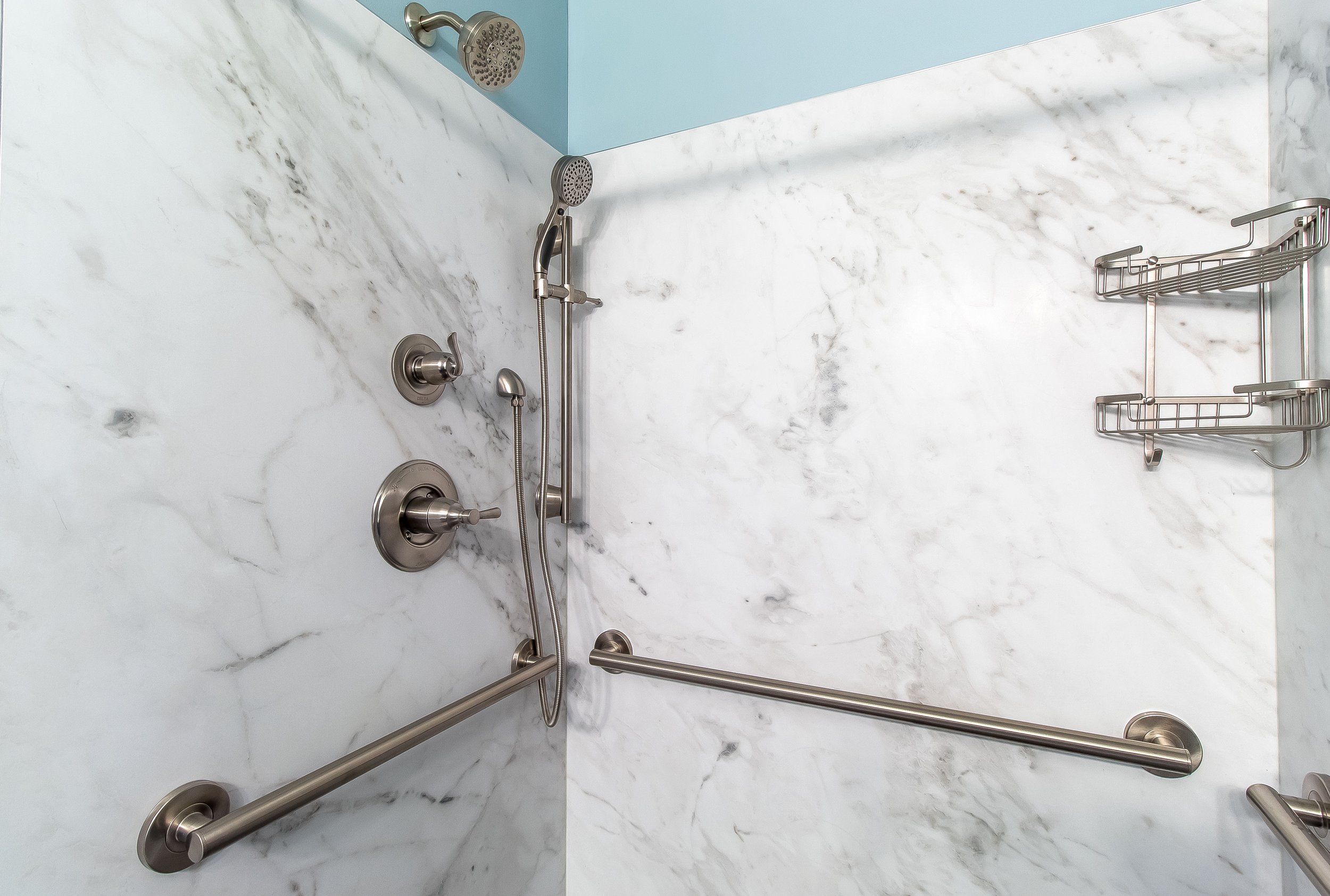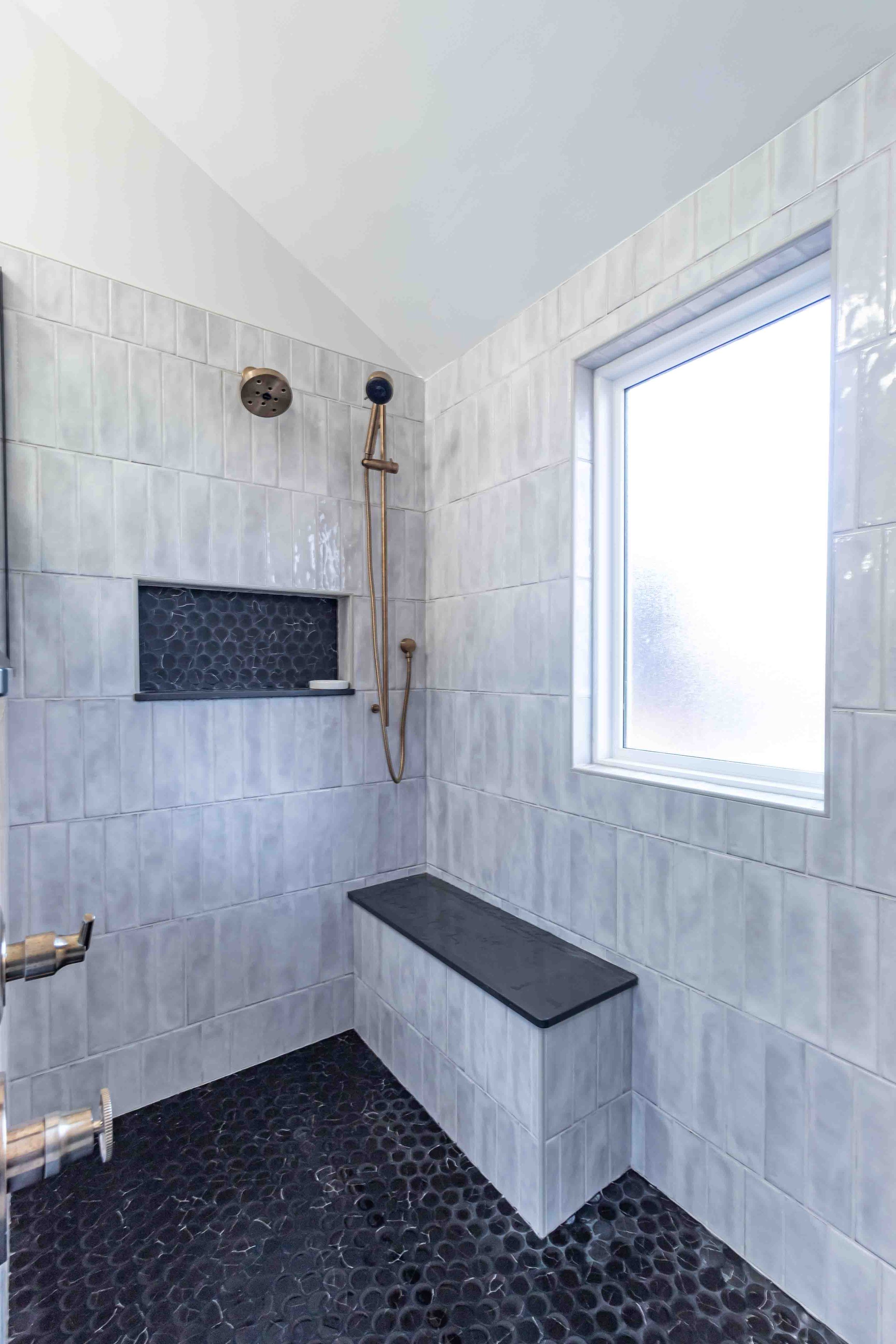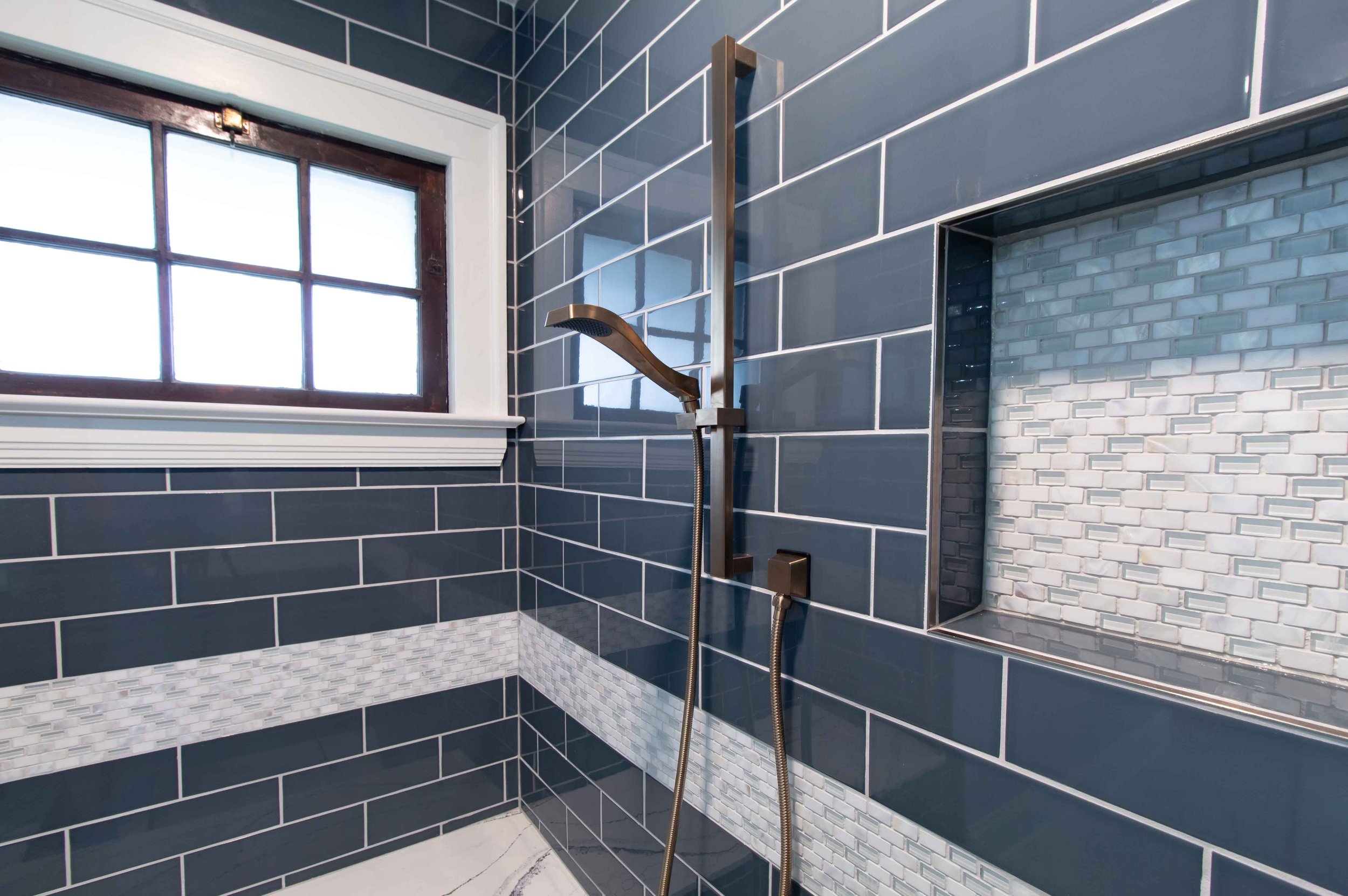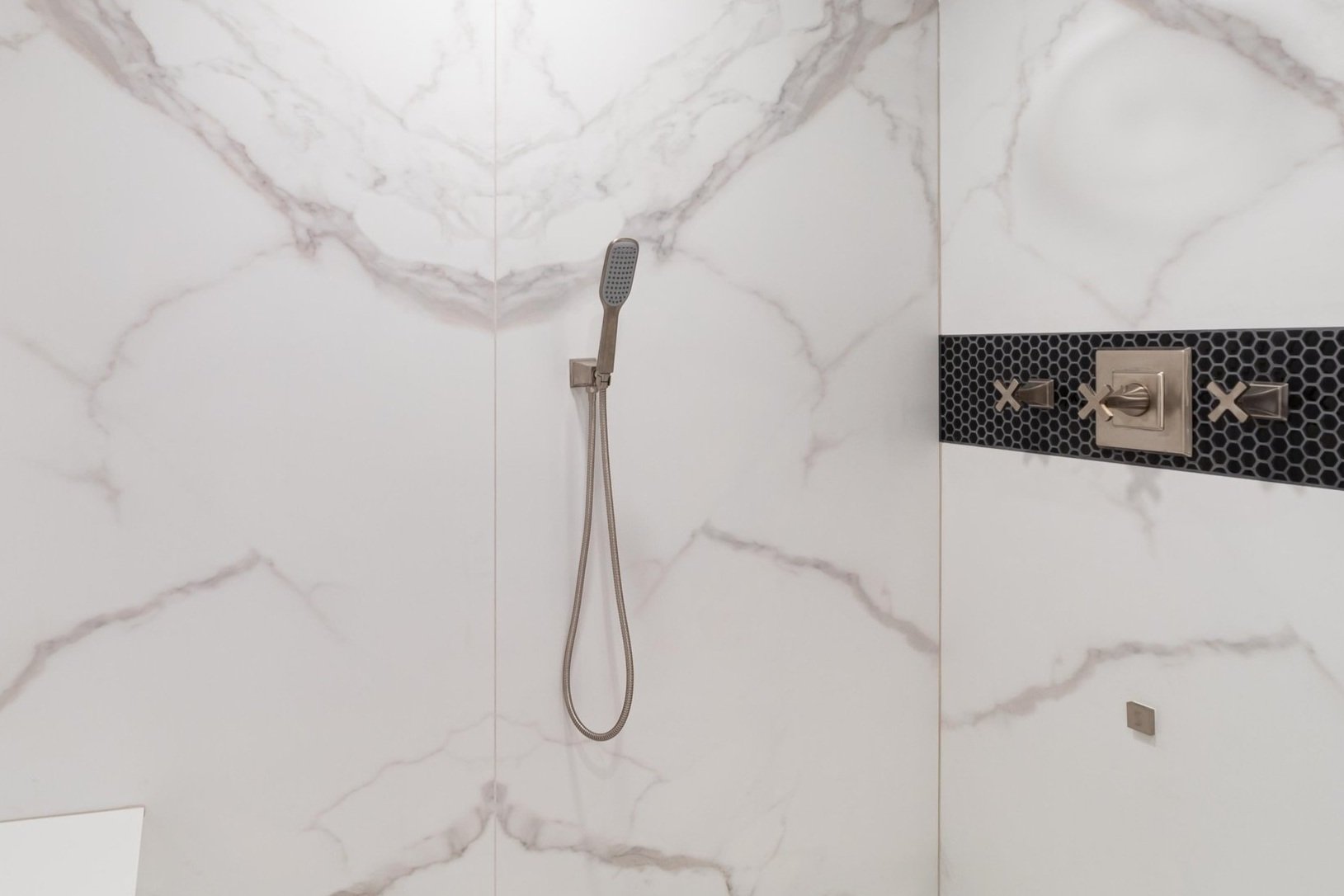The Top 10 Features You Should Have in Your ADA Bathroom Remodel
A Bathroom Planning Guide for Seniors and People with Disabilities
This guide covers various aspects of bathroom design, such as choosing the right fixtures and accessories, ensuring adequate space for maneuvering, and selecting appropriate flooring materials. It also includes information on bathroom safety features, such as grab bars and non-slip surfaces, and tips for maintaining a comfortable and functional bathroom environment.
Here are the Top 10 ADA Features You Should Have in Your Bathroom
1. Curb-less or Walk-in Shower
Accessing a shower space can be difficult for people with mobility issues or wheelchairs, especially if there is a barrier to step over. However, a walk-in or curbless shower design can provide a safe and convenient solution. With this design, there are no hurdles to access the space, ensuring a seamless transition and making showering a comfortable experience.
2. Grab Bars
One of the most dangerous places in our homes can be the bathroom, but there are steps we can take to make it safer. One of those steps is installing grab bars. These bars help with daily tasks and provide support and balance to prevent slips and falls. Please always have them installed by a professional who understands weight distribution and code requirements, and never rely on a suction cup or drywall anchor to hold your weight. Your safety is critical; taking these precautions can make a big difference.
3. Shower Bench or Seat
One way to ensure safety and convenience in the bathroom is to incorporate a built-in shower bench. A shower bench can make a huge difference, offering a comfortable place to sit while bathing and reducing the risk of falling. It's not just about safety, though - having a shower bench can also be convenient after a long day on your feet or when you are not feeling well.
4. Handheld Showerhead
Showering can be challenging for some individuals, especially those who need to sit. That's why a handheld showerhead with an adjustable height can be a great option. It offers greater flexibility and ease of use, allowing you to control the water flow and direction according to your needs. This feature can significantly impact your daily routine, providing a more comfortable and enjoyable showering experience.
5. Non-Slip Flooring
Choose non-slip tiles to create a secure surface, minimizing the risk of accidents in wet conditions. Penny rounds, hexagons, or other small, flat surface tiles are simple yet effective measures to enhance safety.
Types of Tile to Avoid on Your Bathroom Floor:
Polished or High-Gloss Tiles:
Issue: Polished or high-gloss tiles can be slippery when wet, posing a significant slip hazard in the shower.
Recommendation: Choose textured or matte finish tiles to improve slip resistance.
Large Format Tiles:
Issue: Larger tiles may have fewer grout lines but can be more slippery due to a larger uninterrupted surface area.
Recommendation: Opt for smaller tiles with more grout lines to enhance traction.
Glass Tiles:
Issue: Glass tiles, while visually appealing, can be slippery and challenging to maintain in high-moisture environments.
Recommendation: If you prefer the look of glass, consider using it as an accent on walls rather than the primary material for the shower floor.
Types of Tiles You Should Use on Your Bathroom Floor:
Porcelain Tiles:
Advantages: Porcelain tiles are durable, water-resistant, and have various textures and finishes. They are also less porous than some other tile materials.
Consideration: Choose textured or matte finish tiles for improved slip resistance.
Natural Stone with a Textured or Honed Finish:
Advantages: Natural stones like honed travertine, slate, or certain marble types can be naturally slip-resistant.
Consideration: Ensure the chosen natural stone is sealed with a slip-resistant finish to prevent water absorption and staining. Avoid polished finishes on the floor.
Small Mosaic Tiles:
Advantages: Mosaic tiles with small individual pieces and more grout lines provide better traction. They conform to the slope of the shower floor and can be used to create exciting patterns.
Consideration: Choose a grout resistant to water and mold to minimize maintenance.
6. Easy-to-Reach Controls
Consider positioning the shower controls at a convenient and easy-to-reach height for people with limited mobility or reach. This adjustment can go a long way in improving user-friendliness and promoting independence. Also, incorporating motion-sensor faucets in the bathroom sink is a great idea that can make a big difference with painful joints.
7. Contrasting Colors
Individuals with visual impairments often face difficulty while navigating the bathroom. To alleviate this problem, high-contrast color schemes like black and white can be highly effective. Such color combinations allow individuals to distinguish between objects and navigate the bathroom without inconvenience.
8. Adequate Lighting
Improving the lighting in the bathroom is an excellent choice for those who are visually impaired. Good lighting is especially essential in the shower area to enhance visibility and reduce the risk of accidents. Consider waterproof LED lighting fixtures to create a well-lit and safe environment.
9. Wide Open Space
An open space in the bathroom can be conducive for people using a wheelchair or walker, and it can also reduce the risk of tripping over objects in the bathroom. Consider expanding the bathroom into a nearby closet or bedroom to make it more comfortable.
10. Accessible Storage
One effective way to encourage self-reliance is by providing easily reachable storage options in the bathroom. Individuals with varying degrees of mobility can now access essential items without assistance, promoting independence and autonomy.
Some examples of accessible storage include:
Open Shelving:
Advantages: Open shelves provide easy visibility and accessibility. They are perfect for storing towels, toiletries, and decorative items.
Consideration: Keep frequently used items on lower shelves for easy reach.
Pull-Out Shelves:
Advantages: Pull-out shelves in cabinets or under sinks make accessing items stored at the back of the space easier without reaching deep into the cabinet.
Consideration: Install pull-out shelves in vanity cabinets for efficient use of space.
In-Shower Niches:
Advantages: Built-in niches in the shower walls offer a convenient and accessible storage solution for shampoo, soap, and other shower essentials.
Consideration: Ensure the niche is at an appropriate height for easy access
With Odell Construction, remodeling your bathroom into a safe and accessible space doesn't have to be daunting. Trust us to guide you in creating an ADA-compliant bathroom that seamlessly combines functionality, style, and safety.
Our experienced team understands the importance of thoughtful bathroom design, especially for seniors and individuals with disabilities. From safety considerations to optimizing storage solutions, we're here to guide you through every step of the way.
Don't compromise on safety or comfort – let Odell Construction realize your vision. Our commitment to excellence ensures a bathroom that meets ADA standards and reflects your unique style and preferences.
Request a quote today to get the process started!
